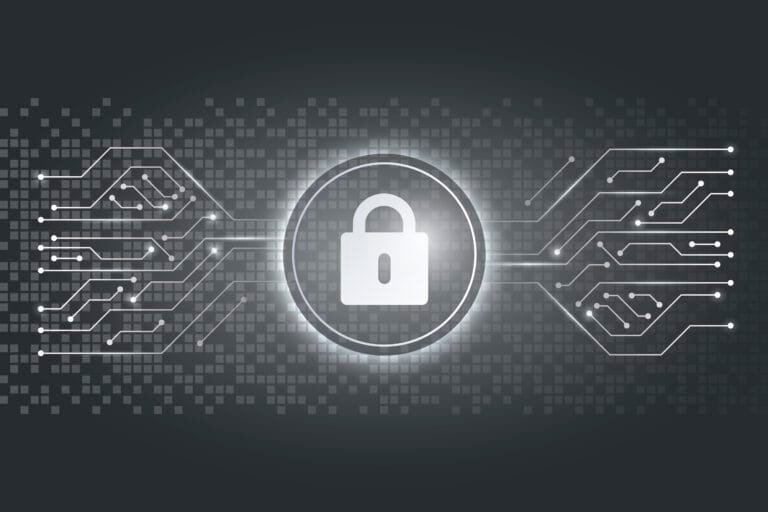When Implementing a Vulnerability Management process, Which of the following is the logical Order of Activities?
In the world of cybersecurity, setting up a system to handle weak spots is the key to keeping your computer systems secure. This system includes a set of careful steps to find, sort, fix, and lessen these weak spots in a network. You need to follow these steps correctly to ensure the system works well, does its job, and fits with the company’s security rules.
The process starts with Identification, where you find possible weak spots in the system. After this, Evaluation looks at the risks connected to these weak spots, thinking about how bad it could be and how likely it is to be taken advantage of. Prioritization then sorts the weak spots by how important they are, focusing on the most serious ones first. Remediation is when we take the steps to fix the weak spots in your system, while Verification makes sure that the fixes worked and that no new weak spots have been created. Finally, Documentation and Reporting keep a record of the process, listing the weak spots that were dealt with and the steps that were taken.
When these steps are done in the right order, then they make up a complete and well-organized plan for handling the weak spots. This plan not only deals with current security issues but also sets up a system for continuous improvement, ready to handle new threats as they come up. The next parts will go into each step in more detail, showing you a combined way to manage Vulnerability in your systems.
Asset Discovery and Assessment
At the center of any plan to handle weak spots is the important step of Asset Discovery and Assessment. This basic step is where companies make a list of their digital and physical things, making a list that includes all systems, software, and hardware parts. It’s like making a map of the land before starting a trip; without knowing what things are there and what they’re like, it’s impossible to keep them secure effectively.
The discovery phase is when we use automatic tools to look through the network, find devices and apps, and gather information about their settings and the data they have. This step should be very detailed for you because we can’t protect things we don’t know about. After discovery, the assessment phase checks these things for weak spots. This includes looking for old software, default passwords, services that are running but aren’t needed, and other security holes that attackers could take advantage of.
At this point, companies should know all about what they own. This is very important for the next steps in the process of managing risks. This list of everything they possess not only reveals to the company what needs to be kept secure but also helps them keep track of any changes and see how well they are doing at managing the risks over time.
Prioritization of Identified Vulnerabilities

After we find the vulnerabilities, the next important step is to decide which ones to deal with first. This is a key part of managing these risks. Not all vulnerabilities are equally dangerous to a company, so it’s important to deal with them based on how serious the threat is, how valuable the things they could harm are, and what could happen if they are exploited.
Deciding what to fix first is often guided by scoring systems like the Common Vulnerability Scoring System (CVSS). This system helps you to understand the main features of a weak spot and gives it a score to show how serious it is. This score can help you to decide how quickly actions you need to be taken.
Besides how serious the vulnerability is, other things like how easy it is to exploit the vulnerability, How difficult it is to fix, and how important it is to the company’s operations are also considered. This process makes sure that the most dangerous vulnerabilities are dealt with first. This helps to use resources wisely and reduces the chance for attackers to take advantage. By deciding what to fix first in an effective way, companies can manage their risks better and keep their security strong.
Remediation and Mitigation
We’ve found the security weaknesses in your system, ranked them by importance, and now it’s time to fix them! This is the part where you take action.
The ideal solution is to remediate the weaknesses. This means patching them up completely, like fixing a hole in a fence. This is usually done with software updates or changes to system settings.
But sometimes a perfect fix isn’t available right away, maybe because of other things running on the system or because a software update hasn’t been created yet. In those cases, we can mitigate the risk. This means making it harder for attackers to exploit the weakness, even though it’s not gone. Think of it like putting a temporary guard over the hole in the fence while you wait for a proper repair.
The ultimate goal is to either fix the weaknesses entirely or make them much harder to exploit, keeping your system secure. Even when we can’t completely fix a weakness right away, there are ways to make it less dangerous. This is called mitigation.
Imagine that weakness is a broken window. We can’t replace it yet, but we can board it up to stop anyone from easily climbing in. Here’s how mitigation works in computers:
- Extra security features: Adding a security guard to patrol near the boarded window.
- Limiting access: Maybe only certain people get to be near the broken window.
- Separating systems: Moving valuable things away from the broken window to a more secure room.
These steps don’t fix the window, but they make it much harder for someone to break in and steal something.
Fixing and mitigating weaknesses is a team effort. Everyone in the company needs to work together, and sometimes outside experts might be needed too. Just like keeping your house secure is a continuous process, so is keeping your computer systems secure. New weaknesses are always being found, so we need to constantly be on the lookout and adjust our security measures. By staying up-to-date and working together, we can make our systems strong and resistant to future threats.
Reporting and Improvement
The last step is all about keeping track of what we found and how we fixed it. This helps you to learn and improve your security over time.
Think of it like keeping a record of the cracks in your walls that you patched. This record helps you see what you’ve already fixed and reminds you of any weaknesses that still need attention. Here’s why keeping good records is important:
- Accountability: It shows everyone that you’re taking security seriously and working to fix problems.
- Following the rules: Sometimes some laws say companies need to track security issues. These records help prove you’re following those laws.
- Knowing how secure you are: By looking at your records, you can see how well your systems are protected and identify areas where you might need to improve.
By keeping good track of what you’ve done, you can learn from your experiences and make your security even stronger in the future!
In conclusion
We identified a bunch of computer system weaknesses, but fixing everything at once would be overwhelming! So, this step is like sorting those weaknesses by importance. Here’s how we do it:
- Severity: How big of a problem is the weakness? Imagine a crack in a wall – a small crack is less serious than a giant hole.
- Impact: If someone were to exploit the weakness, how much damage could they do? This could mean stealing data, messing up systems, or causing financial loss.
- Likelihood: How likely is it that someone will try to exploit the weakness? Think about how easy it is to take advantage of the crack in the wall.
There’s even a scoring system, like a point chart, to help rank these weaknesses. This system is called CVSS. The higher the score, the bigger the security hole and the more critical it is to fix.
By considering all these factors, we can put the weaknesses in order from most dangerous to least dangerous. This helps us focus on fixing the biggest threats to our systems first, making the best use of our time and resources.
The thing about finding vulnerabilities in your computer systems is that it’s a continuous process. New ones are always being discovered, and as we fix old ones, the importance of others might change. So this ordering system we created isn’t set in stone! We need to keep checking and updating it to make sure we’re always focusing on the biggest threats first.
In the next part, we’ll talk about how we go about fixing these weaknesses. Stay tuned!
FAQs
What is a Vulnerability Management process?
A Vulnerability Management process is a systematic approach that organizations use to identify, analyze, and manage vulnerabilities within their operating environment. It involves a series of methodical activities designed to safeguard information systems from potential security threats
What is the role of automated tools in a Vulnerability Management process?
Automated tools play a crucial role in the Vulnerability Management process. They help in the discovery and assessment of assets, identification and scoring of vulnerabilities, and tracking of remediation efforts. They increase the efficiency and accuracy of the process.
How does a Vulnerability Management process help in continuous improvement?
A Vulnerability Management process lays the groundwork for continuous improvement by providing a structured approach to identify, assess, prioritize, remediate, and verify vulnerabilities. It helps in adapting to new threats as they emerge and improving the organization’s security posture over time.
Why is the Verification phase important in a Vulnerability Management process?
The Verification phase is important to ensure that the remediation measures have been successful and that no new vulnerabilities have been introduced during the process. It helps in maintaining the integrity of the system and ensuring the effectiveness of the Vulnerability Management process.
What factors are considered during the Prioritization phase in a Vulnerability Management process?
During the Prioritization phase, vulnerabilities are ranked based on their severity, potential impact, and the likelihood of being exploited. Factors such as the complexity of the exploit, the impact of the vulnerability, and whether there are known exploits in the wild are considered.







